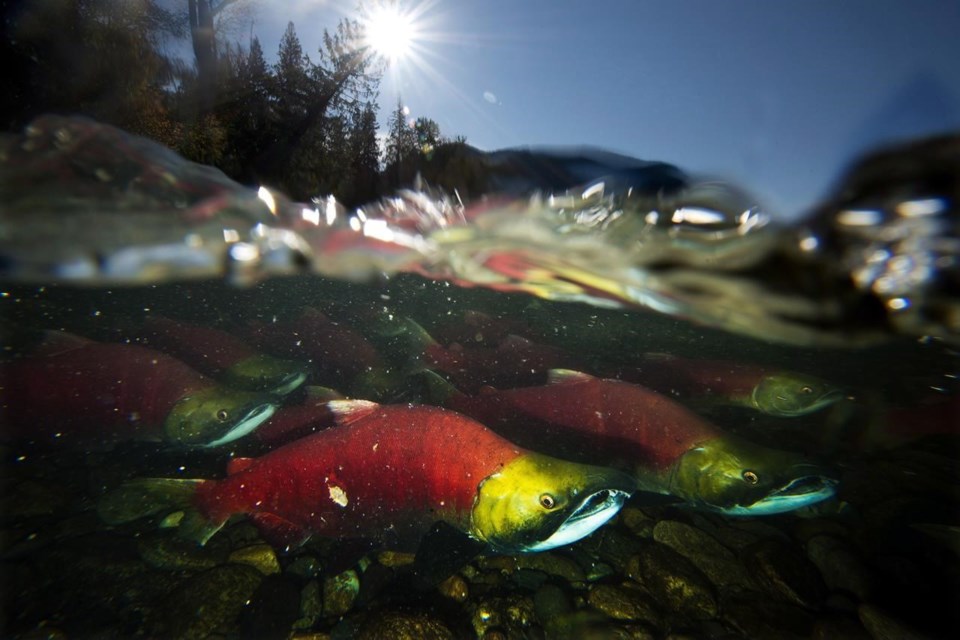VANCOUVER — British Columbia's prolonged drought risks damaging the salmon population for generations and has led to a series of emergency, rapidly deployed projects in an effort to intervene.
The Pacific Salmon Foundation has funded four emergency projects, with more on the way, and convened a federal and provincial advisory group allowing for regulatory approval in a matter of days rather than the standard months-long process.
The foundation's vice-president of salmon programs, Jason Hwang, said while past droughts have been isolated to specific areas and watersheds, this year's far-reaching crisis has salmon facing "the equivalent of trying to run a marathon in a sauna.”
He said streams are low or drying up, leaving fish stranded in isolated pools of water to die. Increasing water temperatures by even a few degrees can stress and kill salmon.
"Unfortunately, I think what we're worried about is there's probably going to be an effect that is going to last for future generations of salmon," he said.
"It's going to be something that I think we want to think about being ready for in the future, and try to do everything we can to mitigate and minimize these effects to help the future survival and well-being of our salmon populations."
This summer, the foundation convened an advisory group of federal and provincial government officials and experts to offer advice on how to protect salmon during the drought and expedite the regulatory approval process for projects.
Projects are still going through review, to make sure they won't inadvertently cause harm, but that regulatory review is being "prioritized and done on a rapid basis," Hwang said.
"So we're able to get regulatory turnaround through the co-operation of these government agencies on these projects very quickly, usually in a matter of days."
So far, crews have been sent out with a range of tasks from digging groundwater refuge areas for fish in the Coldwater River near Merritt, to narrowing the width of a channel at Joseph Creek to ensure salmon fry at the hatchery have deep enough water to migrate through.
In the Comox Valley, aerators have been installed in the Tsolum River to maximize salmon survival by increasing dissolved oxygen levels, and work has started at the mouth of the Tranquille River to re-establish water flow between the upper and lower sections so salmon can migrate upstream to their spawning grounds
More than 80 per cent of the province is at Level 4 or 5 drought conditions, the highest possible rankings, after months of little or no rain.
Hwang said more than half of the province's salmon populations are at some level of conservation risk.
He said “normal” management approaches for water and salmon are not set up to deal with drought conditions the province is facing this year, and there needs to be a review and change to the way government agencies are equipped and organized to deal with drought.
"We don’t have enough people and information to have a good understanding of the scope and scale of the impacts to salmon from this drought, and we are going to need to evolve and innovate how we manage water and how we address the needs for salmon," he said.
The foundation has spent approximately $76,000 on the four emergency projects it has funded so far and is prepared to pay for more as proposals come in. Hwang said it has about $300,000 available, collected from donors and government grants, but will find more money if the need is there.
This report by The Canadian Press was first published Sept. 8, 2023
Ashley Joannou, The Canadian Press



